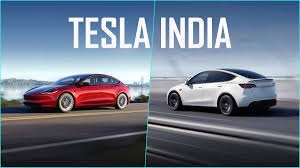All-New 2026 Toyota RAV4: Electrified Innovation Meets Rugged Design

May 21, 2025 – Tokyo, Japan: Toyota has officially unveiled the sixth-generation RAV4, marking a significant leap forward in design, technology, and electrification. As Toyota’s best-selling compact SUV, the RAV4 continues to set benchmarks in the segment, now offering exclusively electrified powertrains and advanced features to meet the evolving demands of modern drivers.

Electrified Powertrains Across the Lineup
The 2026 RAV4 lineup is entirely electrified, offering both Hybrid Electric Vehicle (HEV) and Plug-in Hybrid Electric Vehicle (PHEV) options. The PHEV model boasts an impressive estimated all-electric range of up to 50 miles (80 km), a 20% improvement over the previous generation. This enhancement is achieved through a new 6th-generation PHEV powertrain delivering up to 320 horsepower and standard all-wheel drive (AWD).
Hybrid models are equipped with Toyota’s 5th-generation hybrid system, providing 236 hp on AWD models and 226 hp on front-wheel-drive (FWD) variants. Notably, FWD is now available on RAV4 Hybrid models for the first time, offering consumers more choices to suit their driving preferences.
Bold New Designs and Trims
The new RAV4 introduces three distinct design themes: Core, Rugged, and Sport. Each theme caters to different lifestyles and preferences:
- Core: Available in Hybrid LE, XLE, and Limited grades, offering a balanced blend of comfort and efficiency.
- Rugged: Features the new Woodland grade, designed for adventure with higher ride height, all-terrain tires, and standard AWD.
- Sport: Includes the first-ever RAV4 GR SPORT, developed in collaboration with Toyota GAZOO Racing, featuring GR-tuned handling, aggressive styling, and a powerful PHEV powertrain.

Advanced Technology and Safety Features
Debuting in the 2026 RAV4 is Toyota’s Arene software development platform, enabling over-the-air updates and enhanced vehicle functionalities. The new Toyota Audio Multimedia system offers a more intuitive user experience, while the latest Toyota Safety Sense 4.0 suite provides advanced driver-assistance features, including improved pre-collision systems and adaptive cruise control.
Interior upgrades include a standard 8.0-inch center touchscreen, with an available 10.5-inch version, and a 7.0-inch instrument display, upgradeable to a 12.3-inch screen. Wireless Apple CarPlay and Android Auto, along with multiple USB ports and optional wireless charging, ensure seamless connectivity on the go.
Global Availability and Production Plans
The 2026 RAV4 is set to launch by March 2026 across key markets, including North America, Japan, and Europe. Toyota is considering domestic production in the U.S. to mitigate the impact of tariffs on imported vehicles, complementing existing manufacturing facilities in Kentucky, Japan, and Canada.
With over a million units sold globally last year, the RAV4 continues to be a cornerstone of Toyota’s SUV lineup, now enhanced with cutting-edge technology and sustainable powertrains to meet the future of mobility.
2026 Toyota RAV4: 5 Things You Need to Know Beyond the Headlines
Tokyo, May 21 2025: The sixth-generation Toyota RAV4 made waves yesterday with its bold styling and 100 percent electrified lineup. While most coverage focused on the headline statistics—up to 93 miles (150 km) electric-only range and a muscular 320 hp plug-in drivetrain—there are several quieter revolutions happening beneath that sculpted sheet-metal. Here are five key takeaways that will matter long after the social-media buzz fades.
1. Arene turns the RAV4 into a “software-first” SUV
Toyota’s Arene operating system debuts on the RAV4, laying the foundation for over-the-air feature drops and subscription-based upgrades. That means owners can add functions—like a trail-camera suite or hands-free highway driving—years after purchase without swapping hardware. It is Toyota’s answer to Tesla’s frequent updates and Ford’s BlueCruise roadmap, and signals a strategic shift toward revenue streams that extend beyond the showroom floor.
2. Three personalities, not one size fits all
The new trims are more than marketing gloss. Core grades keep the urban family in mind, skipping rugged cladding for efficiency-optimized aerodynamics. The Woodland grade rides higher on all-terrain tires and includes skid plates plus a factory roof rack. Meanwhile, the first-ever GR SPORT channels Gazoo Racing dynamics: stiffer springs, retuned steering, and a blackout aero kit that hints at hot-hatch DNA hiding in a crossover body.
3. Built where it’s sold—mostly
The outgoing RAV4 is already produced in Kentucky and Ontario, but Toyota is evaluating an additional U.S. production line to insulate the plug-in version from 25 percent tariff exposure. Japanese and European demand will still be met by plants in Aichi and Burnaston, yet North American buyers could soon drive RAV4s built within a day’s truck haul of their dealership.
4. Hybrid now, BEV later
By dropping pure-gas engines, Toyota edges closer to full electrification without abandoning the “multi-pathway” mantra. Executives confirmed that a battery-electric derivative on the same TNGA-K platform is under study for 2027, leveraging the e-Axle and solid-state battery tech previewed on the “Beyond Zero” concept line. For shoppers wary of range anxiety today, the 50-mile (80 km) hybrid still offers gas fallback—no charger panic required.
5. Pricing and incentives
Base Hybrid LE is expected to open around US $32,000—roughly a 3 percent bump that Toyota claims is offset by standard wireless Apple CarPlay, a panoramic camera, and the new Safety Sense 4.0 suite. The PHEV GR SPORT will push past US $46,000, but qualifies for regional clean-vehicle tax credits in the U.S., Canada, and the EU. Leasing firms already predict mid-$300 monthly payments thanks to aggressive residuals set by Toyota Financial Services.

Beyond the specs sheet, the 2026 RAV4 illustrates how the world’s largest automaker is threading the needle between electrification mandates and customer pragmatism. It keeps the familiarity of a compact SUV, sprinkles in software-defined versatility, and positions Toyota to monetize features long after the sale. For a model born in 1994 to surf the early SUV wave, that’s an impressive second act—and one its million-plus annual fans are ready to applaud.













